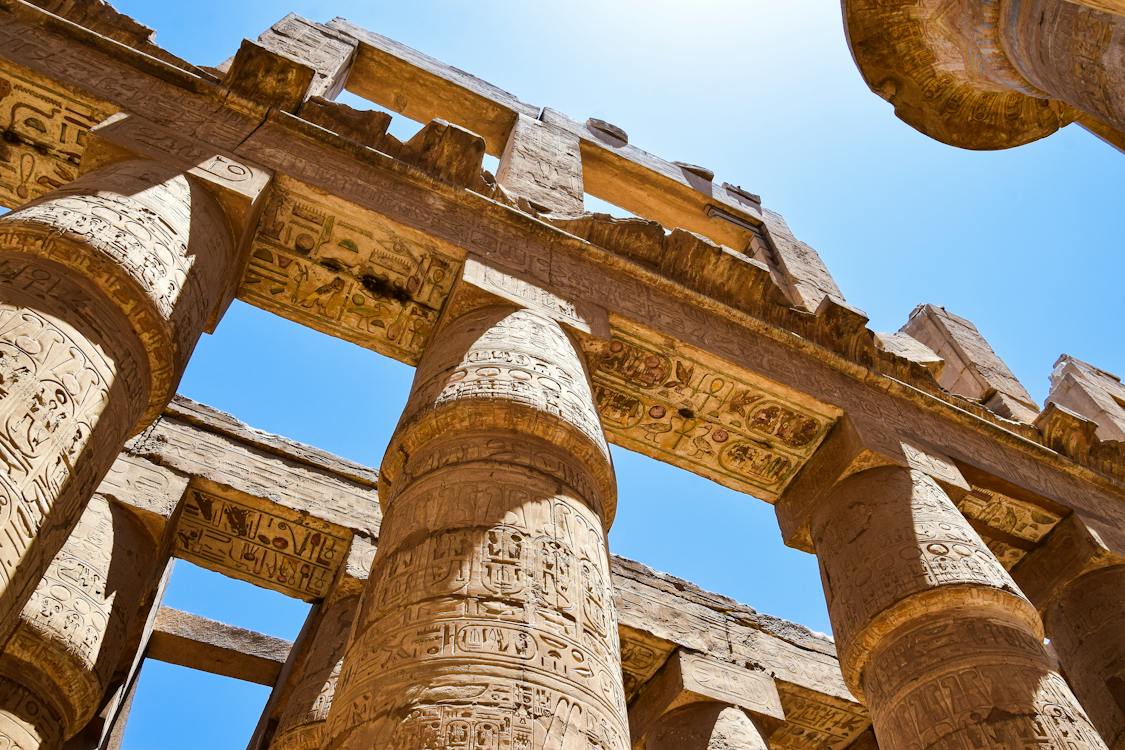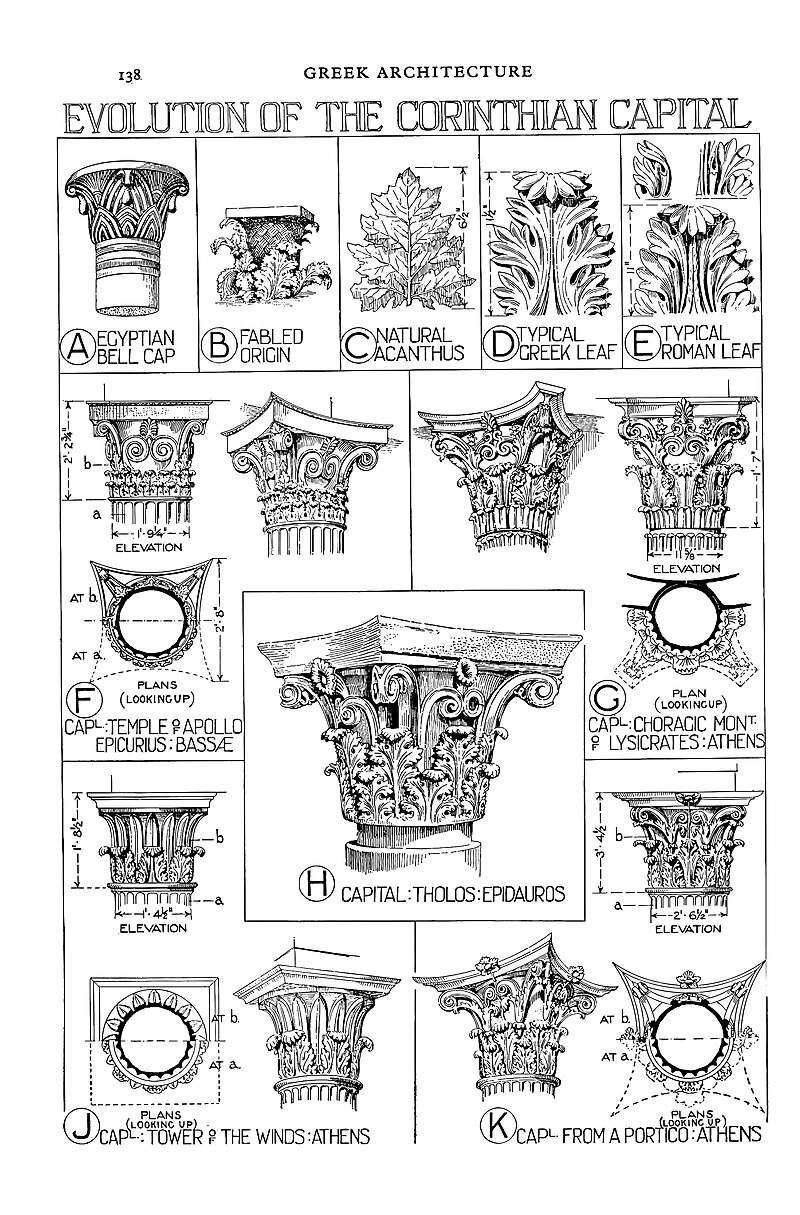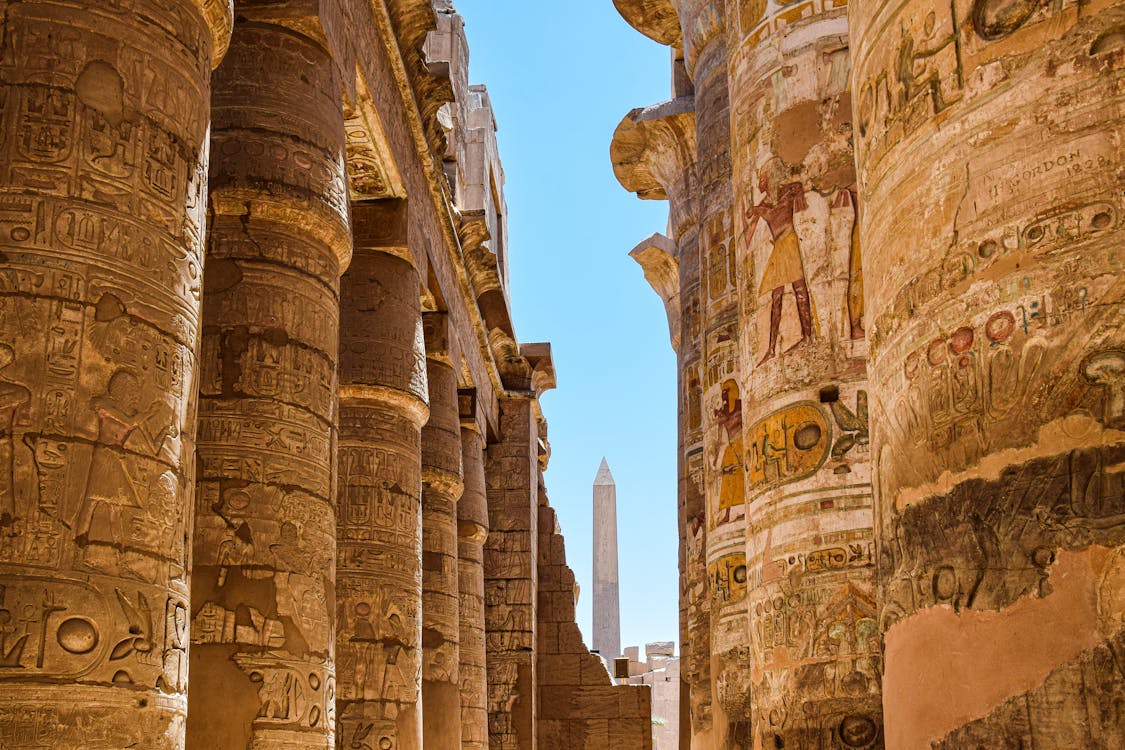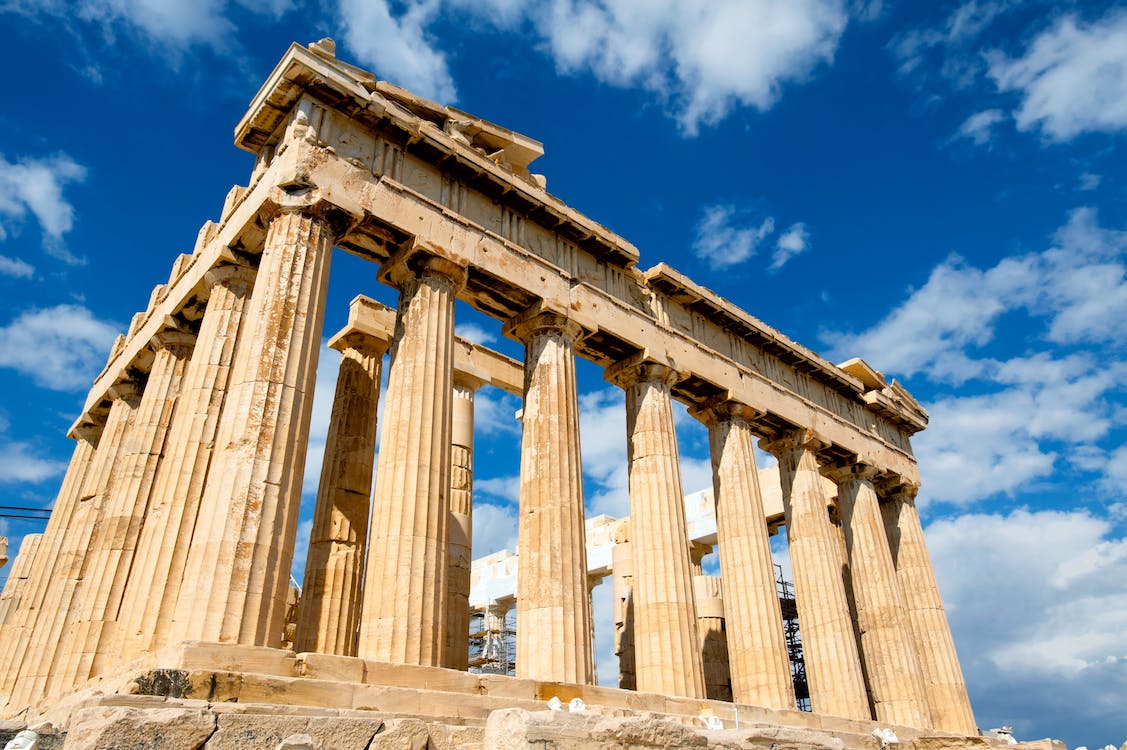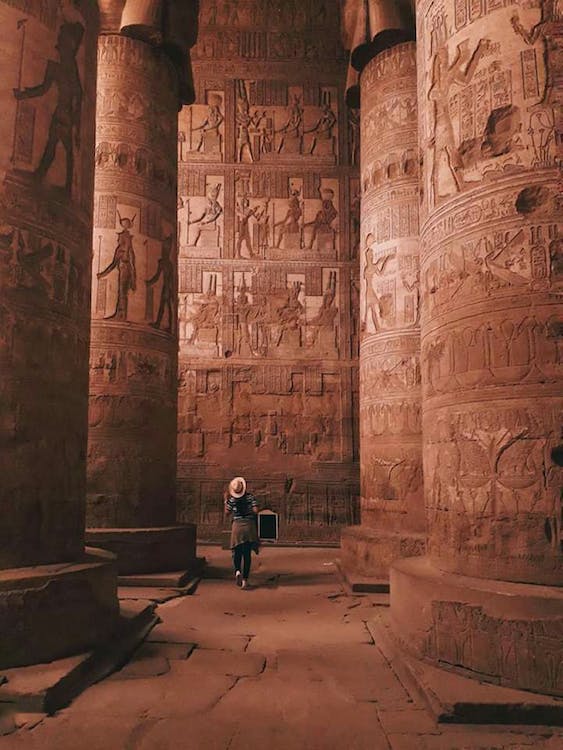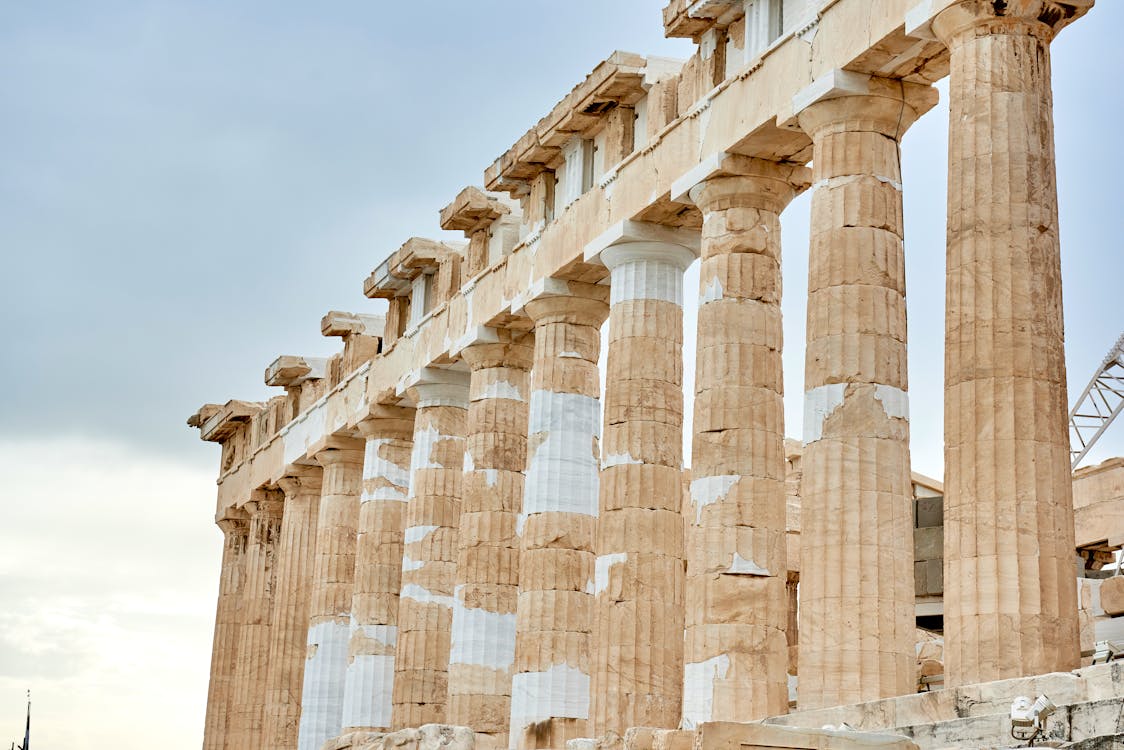The architectural landscapes of ancient Greece and Egypt are punctuated by their iconic structural elements: the Greek columns and the Egyptian pillars. These elements not only served structural purposes but also held deep cultural, religious, and aesthetic significance. This comparative analysis delves into the origins, characteristics, functions, and enduring legacies of Greek columns and Egyptian pillars, offering insights into their impact on architecture and culture.
Historical Context Expanded
Greek Columns – A Testament to Classical Ideals
Greek columns stand as a testament to the ingenuity and aesthetic sensibility of ancient Greek civilization. Originating in the 7th century BCE, these architectural features are not merely structural; they embody the philosophical and cultural ethos of the Greeks. The evolution of Greek columns through the Doric, Ionic, and Corinthian orders represents a journey towards achieving perfect balance and beauty in architecture.
- Doric Order: The Doric order is the oldest and most straightforward among the three, mirroring the Greeks’ appreciation for simplicity and strength. Originating in mainland Greece and spreading to the colonies in Italy, Doric columns are characterized by their stout proportions, fluted shafts, and simple, rounded capitals. They typically stand directly on the temple’s stylobate without a base, emphasizing a grounded and robust aesthetic. The Parthenon in Athens stands as the epitome of Doric architecture, symbolizing the ideals of democracy and civic pride.
- Ionic Order: The Ionic order emerged in the eastern Aegean and is renowned for its grace and sophistication. Ionic columns are taller and more slender than their Doric counterparts, with bases supporting their shafts and capitals adorned with distinctive volutes (spiral scrolls). This elegance and the dynamic movement of the Ionic order reflect the Greeks’ exploration of new territories in aesthetics and their interaction with other cultures, particularly the East. The Erechtheion on the Acropolis of Athens, with its famous Porch of the Maidens, showcases the delicate beauty of the Ionic order.
- Corinthian Order: The Corinthian order is the most ornate, developed later in the Greek classical period but flourishing in the Hellenistic and Roman periods. Corinthian columns are distinguished by their elaborate capitals, decorated with acanthus leaves and scrolls. This order represents the pinnacle of Greek architectural refinement and complexity, symbolizing wealth, sophistication, and the pursuit of a perfected form. The Temple of Zeus Olympios in Athens and the Choragic Monument of Lysicrates are notable examples of Corinthian elegance.
Egyptian Pillars – Symbols of Eternity and Divinity
Egyptian pillars predate Greek columns by millennia, with their origins tracing back to the dawn of the ancient Egyptian civilization around 3000 BCE. These pillars were not confined to a single style or order but varied widely, often inspired by the rich symbolism of the natural world and the pantheon of Egyptian deities.
- Lotiform and Papyriform Columns: The most common types include the lotiform and papyriform columns, which mimic the lotus and papyrus plants, respectively. These plants were not chosen arbitrarily; they were laden with symbolic meaning, representing life, fertility, and the cyclical nature of the universe. The lotus, in particular, symbolized the sun and creation, as it closes at night and reopens with the morning sun, echoing the sun god Ra’s journey through the underworld and his rebirth at dawn.
- Hathoric Columns: Another distinctive type is the Hathoric column, which features the face of the goddess Hathor at the capital. Hathor, associated with music, dance, joy, and fertility, was one of the most beloved deities in the Egyptian pantheon. Her depiction on columns, particularly in temples dedicated to her worship, such as the Temple of Hathor at Dendera, underscores the intertwining of architectural form with religious and cultural identity.
Egyptian pillars served both structural and symbolic purposes, supporting the massive stone roofs of temples and tombs while also evoking the eternal nature of the gods and the pharaohs. The grand hypostyle halls of Karnak and Luxor, with their forest of towering pillars, exemplify the majesty and enduring legacy of Egyptian architectural innovation.
In comparing Greek columns and Egyptian pillars, one observes not just an evolution of structural techniques but also a profound expression of two richly diverse cultures. Through their respective architectural elements, the Greeks and Egyptians articulated their values, beliefs, and aspirations, leaving a legacy that continues to inspire and awe humanity to this day.
Functions and Symbolism
Greek Columns – Pillars of Ideals and Identity
Greek columns, beyond their structural utility, were imbued with profound symbolism and cultural significance. Each of the three classical orders—Doric, Ionic, and Corinthian—was associated with specific attributes and ideals, reflecting the Greeks’ nuanced approach to architecture as an art form that embodies philosophical concepts and social values.
Guiding the Faithful – Architectural Narratives and Civic Engagement
Greek columns played a crucial role in guiding individuals through public spaces and civic institutions, reflecting the communal and democratic ethos of Greek society.
- Civic Spaces: In the agora, or public square, Doric colonnades provided a structured, yet open environment for citizens to gather, discuss, and participate in civic life. These spaces were designed to be accessible and welcoming, encouraging engagement and participation in the democratic process.
- Temples and Sanctuaries: Ionic and Corinthian columns adorned the exteriors and interiors of temples, guiding worshippers and visitors towards the sacred spaces within. The architectural progression from simpler Doric columns in civic spaces to more elaborate Ionic and Corinthian columns in religious buildings mirrored the transition from the earthly to the divine, from the communal to the personal.
Demarcating Sacred Spaces – Hierarchy and Harmony in Greek Architecture
Greek columns served not only to support structures but also to delineate and enhance the spatial hierarchy within architectural complexes, creating a harmonious balance between different areas.
- Spatial Hierarchy: The use of different architectural orders to demarcate spaces within a complex, such as transitioning from Doric in the outer areas to Ionic and Corinthian in the inner sanctuaries, emphasized a gradation of sanctity and importance. This architectural hierarchy mirrored the Greek societal structure and the importance of balance and proportion in all aspects of life.
- Harmonious Proportions: The careful calculation of column heights, diameters, and intercolumniations (spacing between columns) according to mathematical ratios ensured that each space within a Greek architectural complex was in harmony with the whole. This approach reflected the Greek belief in the cosmos as an ordered and balanced whole, with architecture serving as a microcosm of the universe’s order.
Egyptian Pillars – Conduits of the Cosmic and Divine
Egyptian pillars, while serving the practical function of supporting massive stone structures, were also carriers of deep religious and cultural meanings. The design of these pillars was closely linked to the Egyptians’ cosmological views and religious practices, making them an integral part of the sacred architecture that defined their temples and tombs.
- Symbolic Representation: The use of plant motifs, such as the papyrus and lotus, in pillar designs was not merely decorative but symbolized the connection between the earthly realm and the divine. These motifs represented life, fertility, and the cyclical nature of existence, echoing the annual flooding of the Nile which brought sustenance to the land. Pillars adorned with these motifs were thought to bring the protective and regenerative powers of nature into the sacred spaces of temples and tombs.
- Guiding the Faithful: Egyptian pillars often framed the entrance to temples or lined the processional paths within the temple complexes, serving as physical and symbolic guides for the faithful and the priesthood. The grand avenues of pillars, such as those seen in the Great Hypostyle Hall at Karnak, created a rhythmical and awe-inspiring path that led worshippers deeper into the sacred space, towards the sanctuary that housed the deity’s image.
- Demarcating Sacred Spaces: In Egyptian temple architecture, pillars were not just structural elements but also served to demarcate different parts of the temple, separating the public areas from the more restricted, sacred spaces. The gradual increase in the elaborateness and height of the pillars as one moved from the outer courts to the inner sanctum symbolized a progression towards the divine, with the most sacred area being both physically and symbolically elevated by the presence of these majestic columns.
Through their functions and symbolism, Greek columns and Egyptian pillars reveal much about the societies that created them. They were not mere architectural innovations but were deeply intertwined with the cultural, religious, and philosophical fabric of their respective civilizations. These structures continue to captivate the imagination, not only for their aesthetic and structural achievements but also for their ability to connect us to the ancient worlds from which they emerged, reminding us of humanity’s enduring quest for meaning, beauty, and a connection to the divine.
Enduring Legacies
Greek Columns – Pillars of Western Architectural Canon
The influence of Greek columns on Western architecture is both profound and pervasive, extending far beyond the ancient world into the fabric of modern architectural design. The adoption and adaptation of Greek columns in various architectural movements highlight their enduring appeal and versatility.
- Classical and Neoclassical Movements: The Renaissance marked the rebirth of classical antiquity in Europe, with Greek columns prominently featured in the architecture of the period. This fascination continued into the Neoclassical era, where Greek architectural principles were invoked to symbolize enlightenment ideals. Buildings such as the Panthéon in Paris and the United States Capitol in Washington, D.C., are emblematic of this legacy, using Greek columns to convey beauty, rationality, and democratic values.
- Symbolism in Public Buildings: Greek columns have been employed extensively in the design of government buildings, courthouses, and educational institutions worldwide, symbolizing ideals of justice, governance, and knowledge. The use of these architectural elements in public spaces underscores the enduring association of Greek architectural forms with civic virtue and societal order.
- Adaptation in Modern Architecture: Beyond classical revivals, Greek columns have been reinterpreted in modern architecture, often simplified or abstracted to suit contemporary aesthetics while retaining their symbolic resonance. This adaptability underscores the timeless nature of Greek architectural principles and their relevance to modern design challenges.
Egyptian Pillars – Evoking the Mystique of the Ancient World
The legacy of Egyptian pillars in architectural and cultural contexts highlights the enduring fascination with ancient Egypt’s monumental architecture and its rich symbolic language.
- Revival Styles: The 19th and early 20th centuries saw a surge in interest in ancient Egyptian motifs, particularly during the Egyptian Revival movement. This movement was part of a broader fascination with the ancient world, spurred by archaeological discoveries and a romanticized view of Egypt’s past. Buildings such as the Luxor Hotel in Las Vegas and the Egyptian Theatre in Hollywood reflect this legacy, incorporating Egyptian pillars and motifs to evoke an aura of antiquity and exoticism.
- Influence on Decorative Arts: Egyptian pillars have influenced the decorative arts, with their distinctive forms and motifs appearing in furniture, jewelry, and interior design. The use of lotus and papyrus motifs, in particular, has been popular in various art deco and modernist designs, symbolizing a blend of historical reverence and contemporary aesthetic sensibilities.
- Cultural Representations: The imagery of Egyptian pillars has permeated popular culture, appearing in film, literature, and art as symbols of mystery, power, and the sublime. This cultural representation has contributed to the mystique surrounding ancient Egyptian architecture and its enduring appeal in the modern imagination.
The legacies of Greek columns and Egyptian pillars are testament to the enduring power of ancient architecture to inspire, influence, and inform subsequent generations. Through their continued presence in various forms and contexts, these architectural elements connect us to the past, enrich our present, and inspire future creations, demonstrating the timeless dialogue between history and innovation in the built environment.
Comparing Fame – Greek Columns vs. Egyptian Pillars
When evaluating the fame and global recognition of Greek columns and Egyptian pillars, it’s essential to consider various factors such as historical influence, architectural significance, cultural representation, and presence in popular consciousness. Both have made indelible marks on the architectural and cultural landscapes, but their impacts manifest differently across these dimensions.
Greek Columns – Icons of Classical Ideals
Greek columns are synonymous with classical architecture and are emblematic of the ideals of beauty, proportion, and harmony that underpin Western architectural principles. Their influence extends across time and geography, making them a cornerstone of architectural education and appreciation. The distinct orders—Doric, Ionic, and Corinthian—are recognized even by those with a cursory interest in architecture, owing to their widespread adoption in various epochs, particularly during the Renaissance and Neoclassical periods.
- Cultural and Institutional Representation: Greek columns are frequently used in the design of government buildings, museums, universities, and other institutions that aim to convey authority, stability, and enlightenment values. This association with civic and cultural institutions has ingrained Greek columns in the public consciousness as symbols of democracy, knowledge, and cultural heritage.
- Global Presence: The use of Greek columns is not confined to Western architecture; they have been incorporated into buildings worldwide, contributing to their global recognition and association with classical beauty and architectural excellence.
Egyptian Pillars – Embodiments of Ancient Majesty
Egyptian pillars, while perhaps not as universally integrated into varied architectural styles as Greek columns, hold a unique and profound place in the global imagination. Their association with the mystique of ancient Egypt, a civilization that has captivated humanity for centuries, imbues them with a sense of mystery and grandeur.
- Symbolic Richness and Exotic Appeal: The distinctive forms and motifs of Egyptian pillars, such as lotiform and papyriform columns, are instantly recognizable symbols of ancient Egyptian culture. Their presence in temple ruins, tombs, and monuments like Karnak and Luxor has made them emblematic of the architectural ingenuity and spiritual depth of ancient Egypt.
- Cultural and Media Influence: Egyptian pillars have a significant presence in popular culture, art, and media, often used to evoke an aura of ancient mysticism and exoticism. Their depiction in films, literature, and various art forms has contributed to their fame, making them widely recognized symbols of ancient Egypt’s enduring allure.
Determining which is more famous between Greek columns and Egyptian pillars depends on the context in which “fame” is considered. If fame is measured by influence on global architectural styles and principles, Greek columns might hold a slight edge due to their pervasive use and symbolic association with classical ideals across diverse cultures and epochs. However, in terms of symbolic richness, exotic appeal, and representation in popular culture and media, Egyptian pillars command a unique and potent space in the global imagination.
Both Greek columns and Egyptian pillars are celebrated for their beauty, historical significance, and cultural impact. Their legacies transcend their origins, continuing to inspire awe and admiration, making them both equally renowned in their own right within the tapestry of human history and culture.
Comparative Insights
Divergent Philosophical Foundations and Aesthetic Expressions
Greek columns and Egyptian pillars, while sharing the basic structural function of supporting monumental buildings, diverge significantly in their philosophical underpinnings, aesthetic expressions, and cultural significances. These differences are not merely stylistic but are deeply embedded in the contrasting worldviews and values of the ancient Greeks and Egyptians.
Greek Columns
The Greeks’ architectural endeavors were guided by a quest for order, clarity, and proportion, principles that were reflected in the mathematical precision of their columns. The Doric, Ionic, and Corinthian orders, each with its distinct proportions and decorative elements, were manifestations of the Greeks’ philosophical engagement with concepts of beauty, harmony, and the human condition. Greek architecture, with its emphasis on symmetry and balance, sought to reflect the rational order of the cosmos and the idealized human form, making their structures expressions of humanistic ideals and intellectual pursuits.
Egyptian Pillars
In contrast, Egyptian architecture, with its towering pillars adorned with intricate carvings of lotus and papyrus, was deeply intertwined with the Egyptians’ spiritual and cosmological beliefs. The design of Egyptian pillars, often incorporating hieroglyphs and images of deities, served not only a structural purpose but also a symbolic one, acting as a bridge between the earthly and the divine. The monumental scale and ornate decoration of these pillars reflected the Egyptians’ desire to honor their gods and ensure the pharaoh’s journey to the afterlife, underscoring the spiritual and eternal dimensions of their architectural endeavors.
Reflections of Societal Values and Cultural Identities
The architectural elements of both civilizations are reflective of their societal values, religious beliefs, and cultural identities, offering insights into how ancient peoples understood their place in the world and expressed their aspirations and values through built forms.
Civic Life and Community in Greek Architecture
The use of columns in Greek public buildings and temples was a reflection of the polis’s central role in Greek life, where the agora and the temple were key sites of civic and religious activity. Greek columns, in their ordered beauty and harmonious proportions, embodied the ideals of civic participation, democratic governance, and philosophical inquiry that were central to Greek society.
Cosmic Order and Divine Connection in Egyptian Architecture
Egyptian pillars, often found in temple complexes and tombs, were designed to ensure continuity between this life and the next, serving as metaphors for the enduring nature of the cosmos and the pharaoh’s divine role within it. The grandeur and durability of Egyptian architectural elements expressed the culture’s preoccupation with immortality, the afterlife, and the maintenance of cosmic order, with the pharaoh as the intermediary between the gods and the people.
Conclusion
The study of Greek columns and Egyptian pillars reveals the profound capacity of architecture to embody and transmit the deepest values and aspirations of a civilization. These architectural elements serve as more than mere historical artifacts; they are tangible expressions of the ancient world’s intellectual, spiritual, and aesthetic achievements. The enduring appeal of Greek columns and Egyptian pillars, evident in their influence on subsequent architectural traditions and their continued admiration by people around the world, attests to the universal human impulse to imbue our built environment with meaning, beauty, and a sense of connection to something greater than ourselves. Through their enduring legacies, Greek columns and Egyptian pillars continue to inspire, educate, and provoke reflection, bridging the past with the present and future generations.

